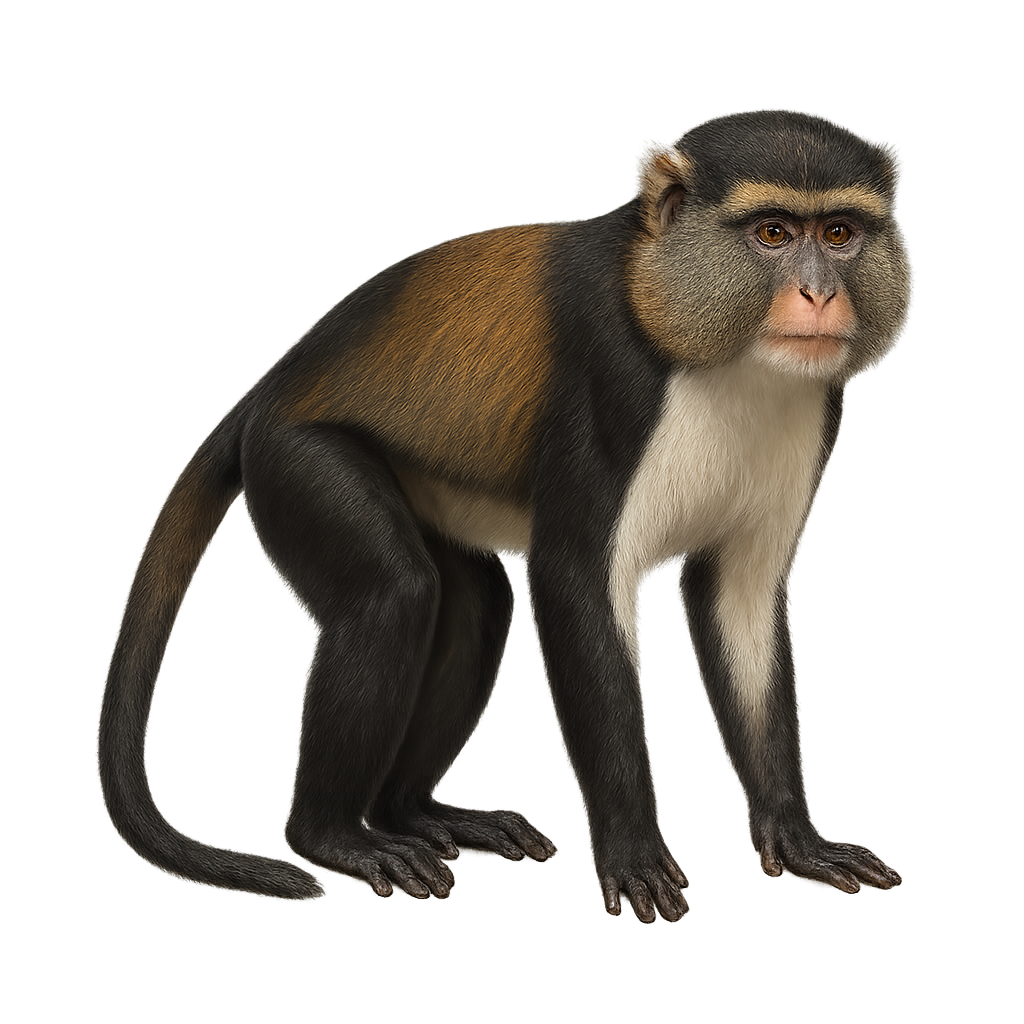Your wildlife photography guide.
Explore the campbell's monkey in detail, study its behavior, prepare your shots.
Where to observe and photograph the campbell's monkey in the wild
Learn where and when to spot the campbell's monkey in the wild, how to identify the species based on distinctive features, and what natural environments it inhabits. The WildlifePhotographer app offers tailored photography tips that reflect the campbell's monkey’s behavior, helping you capture better wildlife images. Explore the full species profile for key information including description, habitat, active periods, and approach techniques.
Campbell's monkey
Scientific name: Cercopithecus campbelli

IUCN Status: Near Threatened
Family: CERCOPITHECIDAE
Group: Mammals
Sensitivity to human approach: Suspicious
Minimum approach distance: 10 m
Rut period: August to October
Gestation: 160-170 jours
Births: January to March
Habitat:
Tropical forests, wooded savannas
Activity period :
Primarily active during the day, with peak activity in the morning and late afternoon.
Identification and description:
The Campbell's monkey is a medium-sized primate, recognizable by its olive-gray fur and black face surrounded by white hair. It primarily inhabits the tropical forests of West Africa, living in complex social groups. These monkeys are known for their sophisticated communication system, using a variety of calls to signal predators or other threats. They primarily feed on fruits, leaves, and insects. Although adaptable, deforestation and hunting pose threats to their survival. Their social behavior and intelligence make them a fascinating subject of study for primatologists.
Recommended lens:
400 mm – adjust based on distance, desired framing (portrait or habitat), and approach conditions.
Photography tips:
To photograph the Campbell's monkey, use a telephoto lens of at least 400mm to capture detailed images from a distance without disturbing their natural behavior. Be patient and discreet, as these monkeys can be suspicious. Look for moments when they interact socially or use their unique communication system. Natural morning or afternoon light can provide ideal conditions for well-lit photos.
The WildlifePhotographer App is coming soon!
Be the first to explore the best nature spots, track rutting seasons, log your observations, and observe more wildlife.
Already 1 439 wildlife lovers subscribed worldwide

